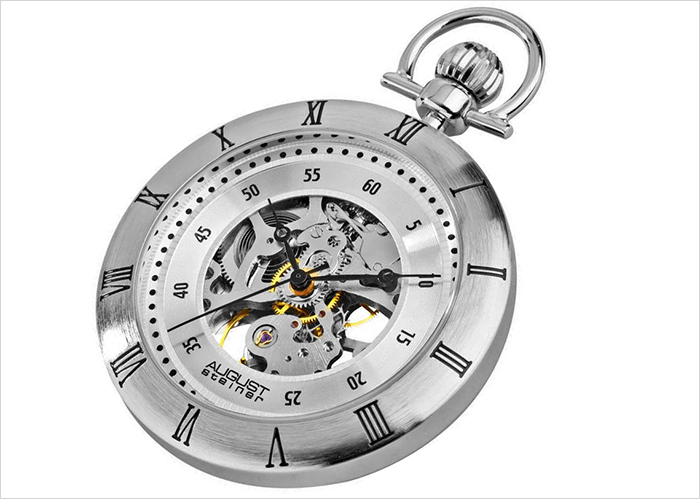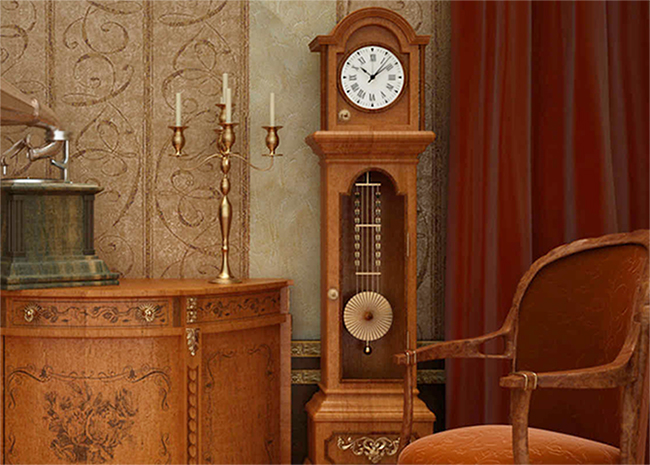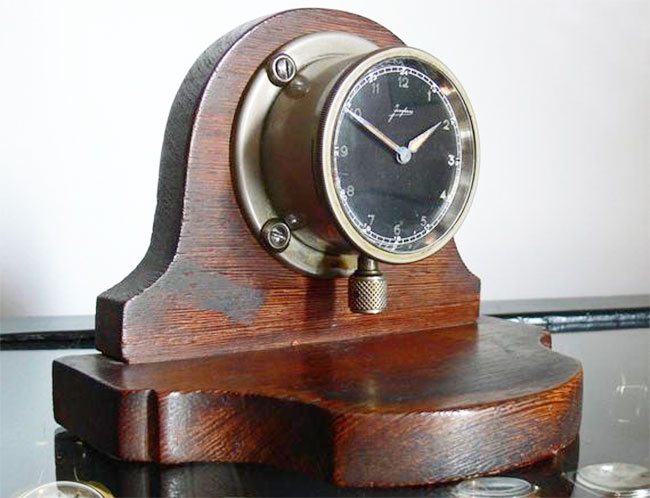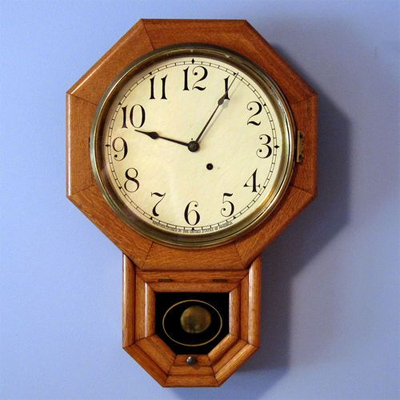Wall clocks represents the largest category among both antique and modern timepieces. They entered France early in the 17th century and were designed specifically for home use.
Antique wall clocks were generally part of the furnishings of most if not all the fine old French houses.
One of the earliest forms of old wall clocks were the 18th century cartel clocks (cartel is a French word for frame), which were housed in elaborate cast-bronze or gold leaf on wood frames.
Old wall clocks are very versatile decorative pieces as well as they are efficiently functional time tellers.
The Anatomy of a Wall Clock
Before exploring into the various aspects of identifying wall clocks, it is essential to understand the basic components of these timepieces:
- Dial or Face: The dial is the clock’s ”face,” where the numbers, markers, and hands are located. It’s where you read the time.
- Hands: Clock hands indicate the time. Typically, there are hour and minute hands, and sometimes a second hand.
- Case: The case is the clock’s outer frame, which encases the movement and protects the clock’s components.
- Movement: The movement, also known as the clock’s mechanism, is what makes the hands move and keeps time. There are various types of clock movements, including quartz (battery-powered), mechanical, and electronic.
- Weights and Pendulum (for some clocks): Antique wall clocks or pendulum clocks often have weights and pendulums that regulate timekeeping.
Identifying wall clocks
As was mentioned, wall clocks embody a very large clock category, both old and modern. Throughout the years, they have been produced in countless range, one that keeps in constant pace with time and trend.
Below is a general classification of wall clocks and identifying them could be done based on antiquity, function, and movement.
Antique wall clocks
Carries along a nostalgia-factor, making the prime choices of most clock collectors. Styles of antique wall clocks can be recognized by certain characteristics such as using Roman Numerals in the clock face with sharply pointed and curvy clock hands.
Well working and high quality old wall clocks are valuable and therefore carry along equally high price and worth.
Vintage and Retro Clocks
Evocative designed wall clocks representing famous clock designs that were once recognized in a particular decade and or period. These clocks evoke the styles of past decades. For instance, a retro clock might have a 1950s diner feel, with bold colors and geometric shapes. Vintage clocks can vary widely depending on the era they represent.
Contemporary wall clocks
Wall clock models that are most commonly purchased. There are styled to make straightforward statements, one that also use Roman numerals but in a rather upgraded look.
Modern wall clocks
Designed to present futuristic wall clock models. Modern wall clocks comes in chaotic graphic designs, space related themes, abstract designs, and many other forms and shapes meant to provide an alternative option for people who want to have a unique wall timepiece.
Decorative wall clocks
Meant to compliment and accentuate the existing decors of a room. Decorative wall clocks do not necessarily require functionality but is rather acquired fore mostly because of its style.
Novelty wall clocks
By far the most leading type of wall clock. They come in all sorts of styles and designs from simple shapes to more complicated forms. Novelty clocks also incorporate famous people such as movie stars and political figures, and even cartoon characters unto their designs.
Wall clock movement
Determining the type of wall clock can also be done via their mechanism, key wound and pendulum clock movements.
• Key wound wall clock – runs by the use of a key to wind up the clock.
• Pendulum wall clocks – is driven by a pendulum or sometimes a giant rod to keep precise time.
Antique wall clock styles and designs
Because wall clocks are basically designed to be hanged on walls, so they’re named, several types of antique clocks fall under its category that too are meant to display elegance in an elevated manner.
Cuckoo clocks
Traces their origin back to 1730 and is an attributed work of Freidrich Eisenlohr, it became popular in the 3rd quarter of the 19th century.
Coo coo clocks are symbolized by a house with a small cuckoo bird that comes out every half an hour (or every hour) to announce the time with a cuckoo call.
Grandfather wall clocks
A style of wall clock that relates to the construction of a long case clock. The obvious difference would be its indicative to be hanged on a wall rather than be a free standing timepiece.
Regulator wall clocks
Are among the most accurate clocks of their time. They run on weight-driven mechanism that allows the clock to be more accurate compared to the simple spring driven wound mechanism.
Gallery wall clocks
Is a popular type of American wall clock. Unlike the banjo clock, that have long cases to hide its pendulum, the gallery clock were almost dial and hardly has any casing beneath the clock’s face at all.
Gallery wall clocks are favored timepieces to be displayed in churches, courthouses, and other public buildings.
Banjo clocks
Is an antique clock type that follows the shape of a banjo. They were originally known as “improved” and “patent” timepiece, the term banjo popularized on later modern times.
Schoolhouse wall clocks
Also referred to as drop dial and drop trunk clocks. This type of wall clock comes with a trunk extension that houses the pendulum.
The clock’s trunk usually has a door with a glassed window that allows the pendulum’s movement to be easily seen and adjusted.
They are likewise referred to as schoolhouse clocks due to their widespread use in schools and other public places such as saloons and post offices.
Mirror clocks
A rather popular form of American wall clock. Its clock dial typically occupies the top of its rectangular case and its bottom section is entrusted to a mirror behind that swings the clock’s pendulum.
Advertising wall clocks
Is used for promotional purposes. It is a collective term that pertains to clocks that advertises certain products and services that is displayed somewhere on the clock dial or on the clock case.
Double – dial wall clocks
A timepiece that provides the hours and minutes in the top section of its case, it also has hands that points to the date, month, and or day of the week located at the bottom. It is a 19th century favorite made mostly by famous clockmakers, Jerome and Ingrahm.
Picture clocks
Is used to refer to 2 different clock styles. One being spring driven that is incorporated with a painting or a picture that is a part of a scene.
The other refers to wall clocks which have dials that are surrounded by a highly ornate and enclosed picture frame type molding.
Analog and digital wall clocks
At the advent of technology, clocks too had adapted the ways and terms by which timekeeping can be done in so many other alternative approach.
This no longer requires traditional complications, and hence the conception of wall clocks driven by modern innovations.
• Analog wall clocks – wall clocks that are powered mechanically. The time is directly shown in the clock face. Some digital wall clocks are powered by an analog movement; they are referred to as flip clocks.
• Digital wall clocks – because of technology’s continuing advancement, digital timepieces came into existence and are becoming more utilized. They do not necessarily need round faces as such they come in an abundant array of shapes and sizes.
LCD wall clocks
Type of digital clock that uses liquid crystal display (LCD) to show and tell time.
LED wall clocks
Light emitting diode (LED), the use of little lights to make up a whole clock face, including the clock hands, and the numbers as well. This allows various forms of wall clock designs that are otherwise wouldn’t be possible.
Neon wall clocks
Usually accompanies novelty wall clocks because of their wacky and playful charm. They are commonly found on liqueur and sports themed wall clocks.
Wall clock themes
Wall clock themes allows a collective grouping that is in accordance to the design of a wall clock that will no longer fall under the earlier mentioned categories.
Nautical wall clocks
Commonly consists of forms portraying a compass, light house, captain’s wheel, life saver, and any other thing that you can find on a ship.
Bathroom wall clocks
A wall clock theme that subsists of the common things you see on bathrooms such as toilet paper, tubs and showers, toothbrush and toothpaste.
Kitchen wall clocks
A popular theme in most part of America. Most of the symbols you can find in these wall clocks include chefs, fruits and vegetables, food, baking ingredients, cutlery and other kitchen wares.
Oversized wall clocks
Are designed for both purposes of classical sophistication as well as functionality. Their rather large size makes it easier to check and tell the time.
Industrial Clocks
Industrial-style wall clocks often feature exposed gears, metal casings, and a rugged, mechanical appearance. They are reminiscent of the machinery and factories of the industrial age.
Identifying by Historical Context
Understanding the historical context of a wall clock can be an interesting aspect of identification. Different eras brought distinct design trends and technological advancements:
- Pre-19th Century Clocks
Before the 19th century, wall clocks were primarily handmade and quite rare. They were often luxury items reserved for affluent households.
- 19th Century
The 19th century saw the rise of mass production, making wall clocks more affordable. Many antique wall clocks with ornate wooden cases and pendulums date to this period.
- Mid-20th Century
Mid-20th-century wall clocks often embraced bold and sleek designs, reflecting the modernism of the era. These clocks may have atomic or space-age motifs.
- Contemporary Era
Today, wall clocks are available in a wide range of styles, from retro and vintage to high-tech digital designs. Contemporary wall clocks reflect the diverse tastes and influences of the modern world.











Leave a Reply